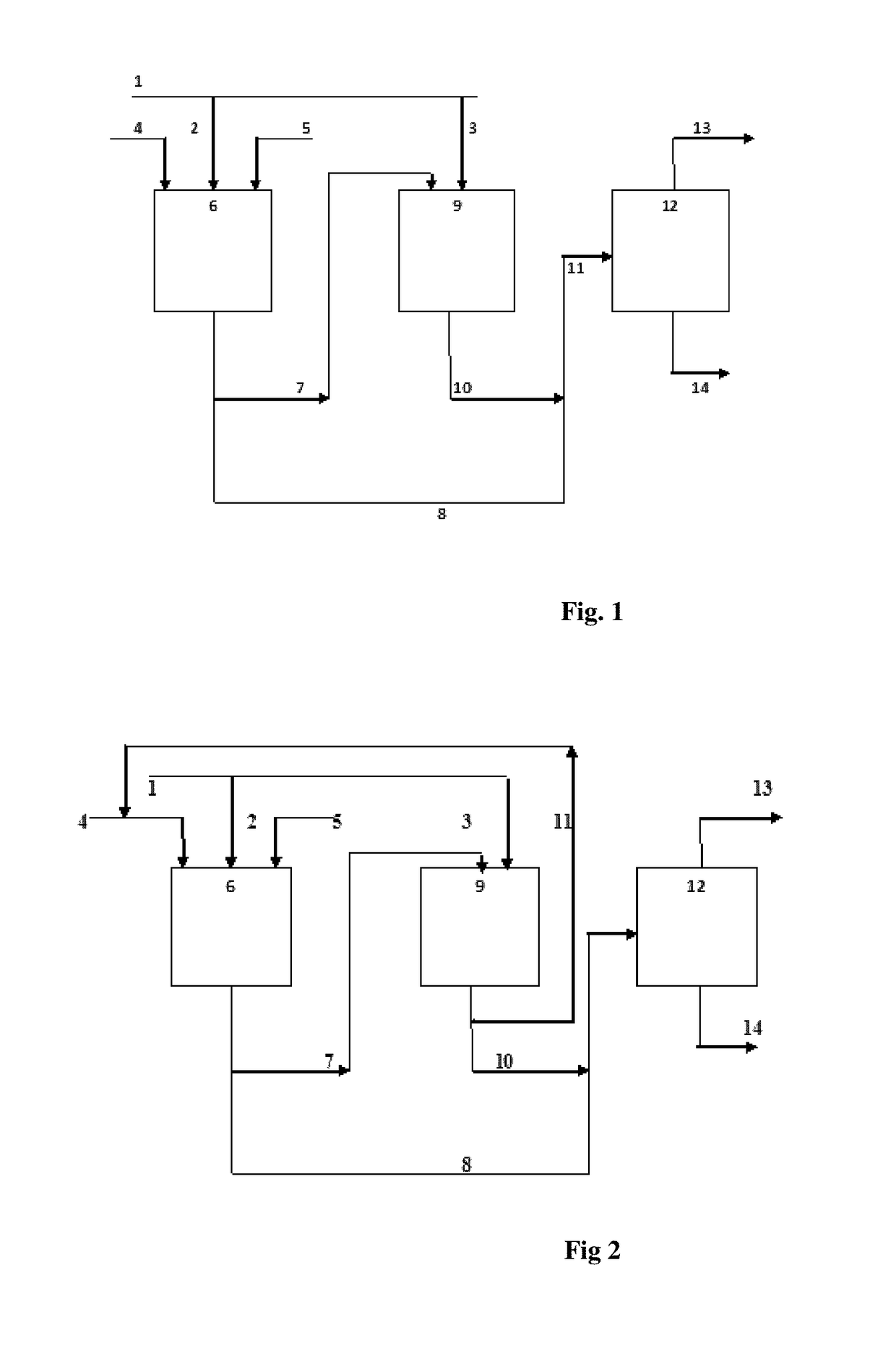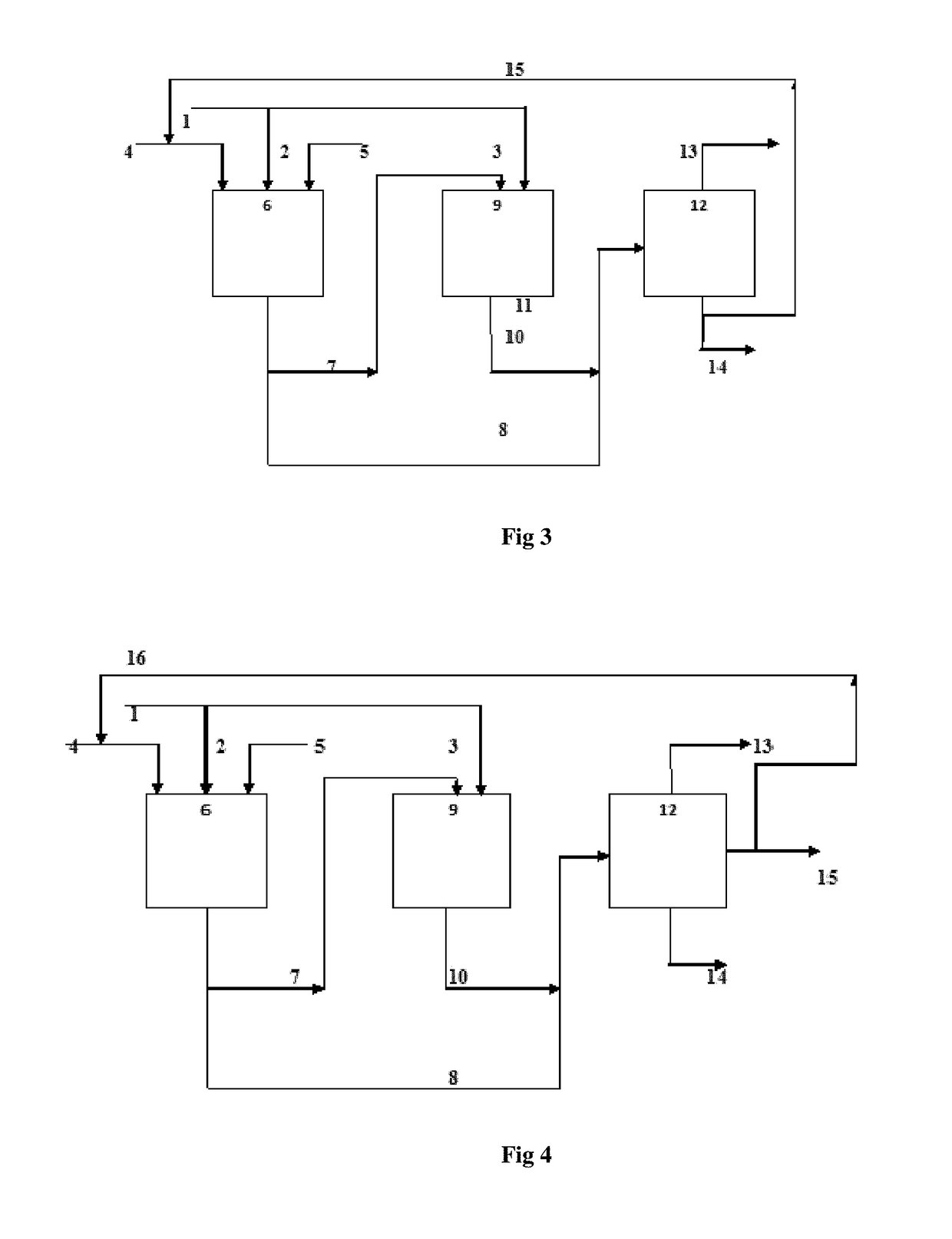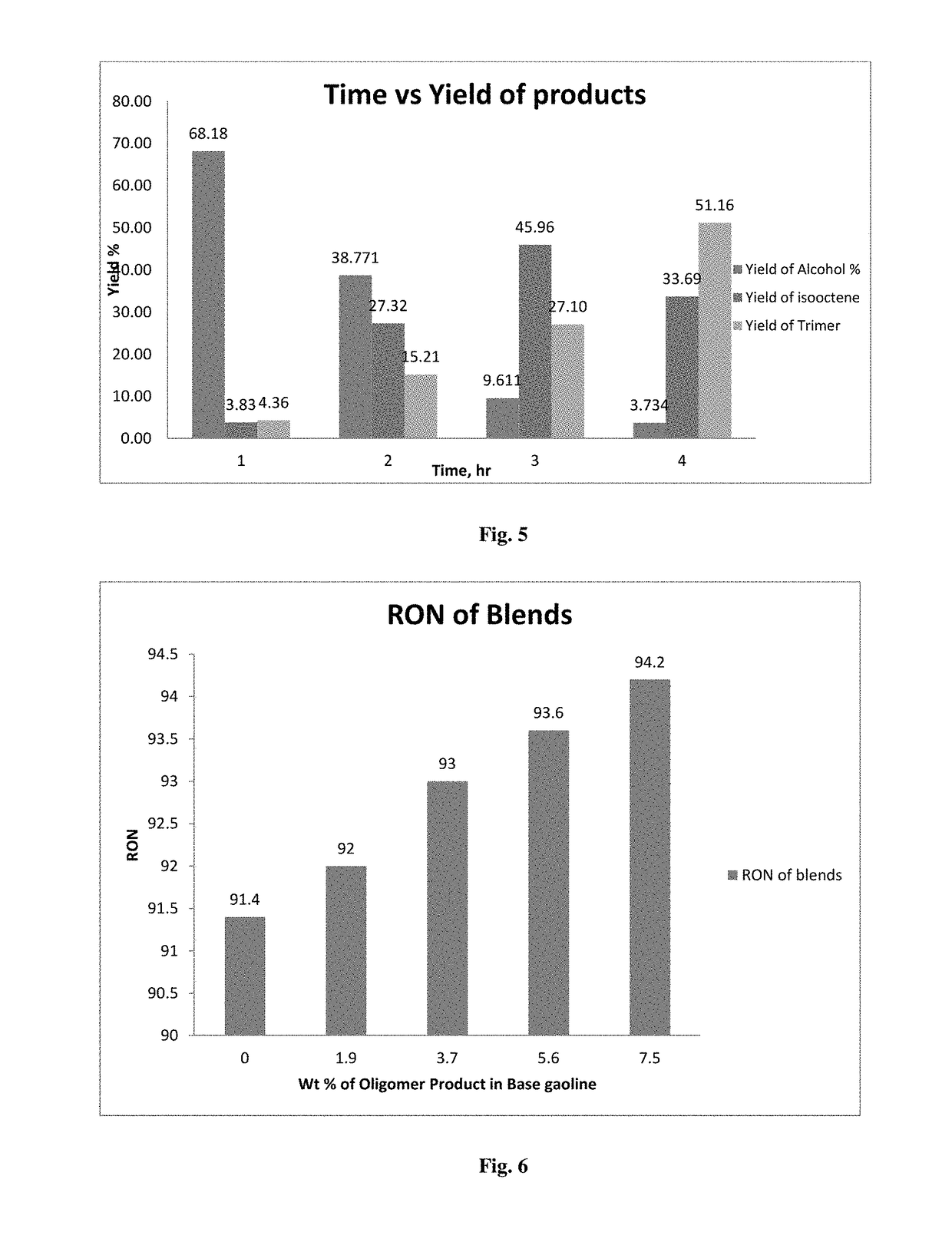Process for simultaneous production of alcohols and oligomer product from hydrocarbon feed stock
a technology of hydrocarbon feed stock and alcohol, which is applied in the direction of hydrocarbon preparation catalysts, hydrocarbon oil treatment products, physical/chemical process catalysts, etc., can solve the problems of complicated downstream recovery section, and achieve the effect of improving the octane number
- Summary
- Abstract
- Description
- Claims
- Application Information
AI Technical Summary
Benefits of technology
Problems solved by technology
Method used
Image
Examples
example 1
Variation in Yield of Products Due to Change in Catalyst Wetting with Time
[0085]10 g of Hydration Catalyst is soaked with water in the range of 100% of moisture holding capacity of the catalyst and loaded in the tubular reactor; Feed comprising 90 wt % of isobutene and 10 wt % of propylene is passed through the reactor at 65° C. and at a pressure of 16 bar. The products from the reactor is separated and analyzed for the detailed hydrocarbon analysis after every 1 hr. It is found from FIG. 5 that with time the yield of tertiary butyl alcohol and iso propyl alcohol decreased whereas the dimer and trimer product increased. This clearly shows that the water present in the catalyst reacts with propylene and isobutene in feed to form iso propyl and tertiary butyl alcohol and as the water gets consumed, i.e. wetting of catalyst is reduced with time, the formation of dimer (isooctene) and trimer is dominant. It is to be noted that there is no addition of water after the catalyst loading thr...
example 2
Effect of Wetting of the Catalyst on TBA Yield
[0086]It is clear from example-1 that the selectivity and yield of the desired products depend upon the amount of water present in the catalyst, hence it is desired to find out the effect of wetting of catalyst on the yield of TBA only, to establish the proof of concept. A batch stirred tank reactor is used for this purpose and then 10 g of catalyst is loaded in each experiment with 50 wt % wetting, 70 wt % wetting and 90 wt % wetting. 27 g of isobutene is charged in each batch along with n-hexane as a diluent. Reaction has been carried out at 16 bar pressure and at 65° C. Nitrogen is used as inert for pressurization. Reaction time given is 15 min. The results are tabulated as shown below:
[0087]
TABLE 1% wetting507090Conversion of Isobutene, wt %75.1460.5355.26TBA Yield (On Water + Isobutene), wt %34.3037.7748.58Selectivity of TBA, %42.261.591.3Selectivity to oligomers, %57.838.58.7
[0088]From the above table it is clear that with the incr...
example 3
Effect of Wetting of the Catalyst on TBA Yield in Continuous Mode
[0089]In order to establish the yield and selectivity of TBA which corroborates to 90% wetting of catalyst in continuous mode, requisite quantity of catalyst is loaded in tubular reactor and the olefin space velocity is maintained at 2 hr−1, pressure and temperature are maintained at 16 bar and 65° C. respectively. Effect of water percentage in total feed has been studied and the results are shown below:
[0090]
TABLE 2Run No.1234Water in feed, wt %8.214.518.718.7Conversion of Isobutene, wt %54.9341.4840.3840.56TBA Yield, wt %8.2324.2151.1250.9Isooctene Yield, wt %21.3418.91.931.97Trimer Yield, wt %27.76.6600
[0091]It is clear from the above table that increase in water content increase the TBA yield and decreases the oligomer product yield. TBA yield almost closely matches with 90 wt % wetting results of Example 2. Hence the feed is continued for 150 hrs operation at the Run No 3 condition to check whether the TBA yield i...
PUM
| Property | Measurement | Unit |
|---|---|---|
| wt % | aaaaa | aaaaa |
| wt % | aaaaa | aaaaa |
| Pressure | aaaaa | aaaaa |
Abstract
Description
Claims
Application Information
 Login to View More
Login to View More - R&D
- Intellectual Property
- Life Sciences
- Materials
- Tech Scout
- Unparalleled Data Quality
- Higher Quality Content
- 60% Fewer Hallucinations
Browse by: Latest US Patents, China's latest patents, Technical Efficacy Thesaurus, Application Domain, Technology Topic, Popular Technical Reports.
© 2025 PatSnap. All rights reserved.Legal|Privacy policy|Modern Slavery Act Transparency Statement|Sitemap|About US| Contact US: help@patsnap.com



